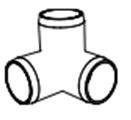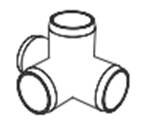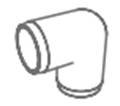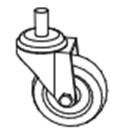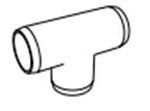With summer around the corner, you might be looking to get your kids some fun new toys to keep them busy. Roller skates for kids are excellent for teaching balance and developing gross motor skills. While a great outdoor activity, you can also use roller skates indoors at roller rinks, making them a value-for-money purchase.
Types of Roller Skates for Kids
There are two main roller skates for kids – quad skates and inline skates. Within both types, adjustable variants are also available. Let’s take a closer look at the two types:
Quad Skates
The classic quad style of skates is the skates your see at indoor roller rinks. They resemble tennis shoes with four wheels, two in the front and two at the back. This style of skates provides the best balance and stability and is a great starting point for all beginner skaters.
Inline Skates
Inline skates are slightly more advanced and require good balance to use. Using inline skates is similar to ice skating, just minus the ice. Inline skates typically feature 4-5 wheels in a straight line down the shoe’s sole, each wheel behind the one in front of it. Inline skates are better suited for older children and teens or kids already comfortable skating.
How Roller Skates Should Fit
Selecting the right size roller skates for kids can be tricky. A snug fit is safest, but many children find this uncomfortable and often painful. With kids growing so quickly, you might be tempted to buy a pair of skates a few sizes bigger so that they get good use out of them. However, it is recommended that you purchase the same size as your child’s regular shoes or one shoe size bigger. But not more than that. Most manufacturers match their sizing to the popular shoe brands to help the customer find the best fit.
A few sizing tips:
A Word On Safety
A roller skate that is too large for your child’s feet will cause blisters from constant friction caused by their feet moving around and rubbing the inside of their skate. Additionally, skates that are too big can cause children to fall or twist their ankles. If you opt to size up, use one pair of thick socks rather than two regular socks to lessen the gap and secure your child’s foot until they grow into the boot. Wearing two pairs of socks creates extra moisture and can also cause blisters.
Never compromise the safety of your children to save a few dollars. Instead, adjustable skates that can grow with your child’s foot size if your budget is tight.
What are the benefits of roller skating?
Roller skating is a wonderful cardio workout for your children. It provides an opportunity to blend fun and exercise into one activity.
How to Buy Roller Skates for Kids
The Size of the Shoe
When selecting a size, you want a shoe of the skate to have a snug fit while not squashing your child’s toes. Your child’s toes should barely be touching the front of the shoes, and there needs to be about a pencil space between your child’s heel and the back of the shoes. If you’d like to buy a size up, it’s recommended to stick to your child’s actual shoe size or one size bigger—no more than that.
If you want a pair that will last a few years, consider purchasing a size adjustable roller skate. These are the skates where the skate is extendable length-wise to accommodate those growing feet, such as the Roller Derby Trac Star.
The Brand
Some brands are known for their roller skates, like Roller Derby. Brands focusing on a specific niche tend to be more thoughtful and practical in their product designs. They have expert knowledge of the products and understand the customers’ issues and success using their products.
The Chassis Design and Type
A chassis is the base frame of the roller skate. It provides the strength needed to support the weight of all the shoe’s components and the riders. The chassis is a significant component of the safety system of the roller skate; it keeps the shoe rigid and stable.
You’ll find three main chassis with quad roller skates for kids: tractor, truck, and torsion beam.
The tractor chassis sits low on its four wheels. The two front wheels are much smaller than the two large rear wheels, like a tractor the chassis was named after. It’s kind of like having training wheels but for roller skates. The truck chassis sits higher on its wheels and has the traditional wheel arrangement—even-sized wheels on a chassis that carries weight across the chassis evenly. The torsion beam chassis has four wheels mounted onto a single axis suspended by springs. This design acts as a shock system that smooths the ride on rough terrain.
- Tractor Chassis
- Truck Chassis
- Torsion Beam Chassis
Type
There are various types of skates, ranging in use and terrain. The two kinds of roller skates for kids on this list are inline and quad skates. Both types are for indoor or road use. Inline skates consist of four wheels in a straight line behind each other from head to toe. Quad skates are four wheels placed like the wheels of a car, two in the front and two at the back.
Your Child’s Skill Level
The type of roller skate you purchase depends on your child’s skill level. Quad skates are generally for beginners, those new to skating and don’t have the needed balance skills. Inline skates are more for the intermediates, those who have roller skated before or have good balance.
Indoor or Outdoor
Skating indoors or outdoors is a choice based on preference. It’s important to consider your child’s skill level, awareness of their surroundings, and how brave they are. Skating on tar or paved roads could require more balance because of the uneven surface, surface texture, and potholes. Your child should be aware of their surroundings when roller skating on the road for their safety. They need to be mindful of any oncoming vehicles.
Roller Skating Safety Checklist
How to Make a PVC Roller Skate Trainer (DIY)
Almost everyone rides a bicycle with training wheels until they learn how to balance correctly; roller skating is not too different. A PVC roller skate trainer will help your child get the hang of the movement first so they can progress on to learning balancing next. It’s a great place to start for really young kids or those who are a little unsteady.
What you’ll need:
Hardware:
Tools:
- 3 Way Elbow
- 4 Way Tee
- 90 Degree Elbow
- Caster Fitting
- Caster Wheels
- PVC Tee
Step 1:
Using either a PVC cutter, handsaw, or miter saw – cut the PVC pipe into 7 x 24″ sections.
Step 2:
Join two 24″ PVC pipes into the left and right sides of the 1-1/4″ 4-Way Tee.
Step 3:
Insert the 1-1/4″ Standard PVC Tees on the ends of the PVC pipes to create a base frame.
Step 4:
Connect the caster wheels to the caster fitting inserts.
Step 5:
Connect the assembled caster wheels to the base frame.
Step 6:
Join two 24″ PVC pipes to the 3-Way Elbow.
Step 7:
Insert the 90 Degree Elbows on the ends of the PVC pipes to create the handlebars.
Step 8:
Connect the handlebars and base frame to the renaming three 24″ PVC pipes.
Step 9:
To secure all the connection points and prevent the frame from coming loose, either drill holes and secure them with screws or use PVC cement to hold the parts in place.
Frequently Asked Questions
What Special Gear Should I Purchase?
Safety gear is the most important; ensure your child has a correctly fitted helmet, elbow and knee pads, and wrist guards. A PVC roller skate trainer is handy gear for fresh beginners. It helps kids learn the basic motions of how to skate while aiding their balance. Once they get the hang of the footwork, they can move on to trying without the trainer. It’s like training wheels on a bike; they’re easy to make yourself.
What is a Good Age to Start Roller Skating?
Around four to five years old. Most kids will be interested in roller skating and have some of the essential abilities required (like balance).
Which Roller Skates are Best for Beginners?
Quad skates are best for beginners. They are easier to maintain balance and learn the basics of skating.
Should my Child Roller Skate Indoors or Outdoors?
This will largely depend on whether you have the ideal outdoor skating conditions for your child to skate on. Both indoor and outdoor roller skating is fine but has separate skates for each. Using roller skates designed for indoor use will wear the wheels down and prevent them from providing the grip needed for indoor roller skating.
Roller Derby Trac Star
The boot itself is comfortably padded, providing a snug, secure fit. The Trac Star features cam-lever buckles, making it easy for kids to get it on and off themselves without needing any help to tie shoelaces.





